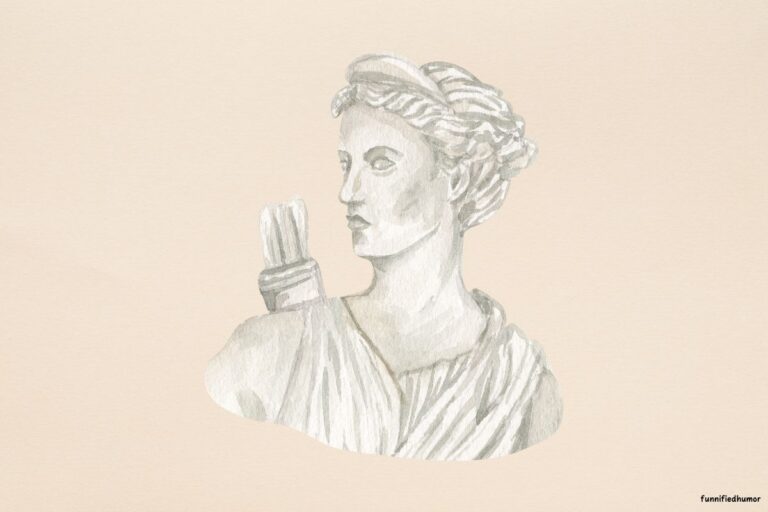3 Stories about Charity That Will Make You Weep

Welcome to a special blog post that’s very close to my heart.
Today, we delve into the transformative and often mysterious power of charity, a subject that has moved and motivated humanity for centuries. While charity is often perceived as a simple act of giving, its impact goes far beyond the material.
It has the ability to touch lives, heal broken spirits, and ignite flames of hope where there were once only ashes.
In this post, we will explore captivating stories about charity, tales that unravel the complexities and joys of giving. These narratives, woven with emotion, resilience, and love, offer a lens into the human soul and the remarkable ways in which charity can change lives.
From a young orphan artist’s journey in Florence to the golden strings of a violin that breathed life into a shelter, to the enigmatic and cursed tree that veils acts of kindness, these stories are both heartwarming and heart-wrenching, reflecting the dual nature of life itself.
So, grab a cup of coffee or perhaps a box of tissues, and settle in.
You are about to embark on a journey that showcases the monumental influence of small acts of charity.
Prepare to be inspired, and remember, in the words of Winston Churchill, “We make a living by what we get, but we make a life by what we give.“
Stories About Charity
1. A Heart Unrecompensed
Mariah gazed out of the window of her humble apartment, watching the people below as they bustled about their daily lives. She’d lived here for nearly forty years, and the once-vibrant neighborhood had succumbed to neglect and decay. Buildings crumbled, streets were grimy, and crime was rampant. But in this grim environment, Mariah saw an opportunity for hope.
“I think it’s time,” she murmured to herself, making up her mind to start a charity. Her vision: a community center where children could learn, play, and be safe. She had always believed that with a little push, the community could bloom once again.
Pooling her savings, Mariah rented a small dilapidated space down the street. With the help of neighbors, they began restoring it.
Two months into the renovation, a young man named Eddie approached her. “What are you doing with this place?” he asked with curiosity.
“It’s a haven,” she replied, smiling. “For the children.”
He paused, observing her with intensity, then nodded. “I’ll help,” he said simply.
Together, they worked tirelessly. Eddie proved invaluable. With his knack for carpentry and masonry, the center began to take shape faster than Mariah had ever hoped.
“Why are you doing this?” she asked Eddie one day.
Eddie looked at her with sadness in his eyes. “I grew up here. I was one of those kids, lost in the chaos. If there had been a place like this back then, maybe things would’ve been different for me.”
One evening, as Mariah was locking up, a group of thugs from a local gang confronted her. They demanded protection money. She tried reasoning with them, explaining that the center was for the community’s children. But they didn’t care.
Days turned into weeks, and the threats intensified. Mariah was determined to protect her dream, but she couldn’t do it alone. She approached the local police, but they were stretched too thin to offer much help. The community, although supportive, was too afraid to confront the gang directly.
One fateful evening, as Mariah was heading home, she was ambushed. The attackers left her severely injured, with a message: “Close the center or the next time will be worse.”
Eddie, upon discovering her, rushed Mariah to the hospital. As she lay in the hospital bed, the weight of the situation pressed down on her. Tearfully, she turned to Eddie, “Maybe it’s a sign. Maybe we’re just not meant to have this here.”
Eddie clenched his fists. “They won’t win. This place means hope, Mariah. We can’t let it be crushed.”
In a bold move, Eddie organized a community gathering. He spoke passionately about Mariah’s vision and the need for everyone to stand together against the oppression. The community responded, forming nightly vigils, patrolling the streets, and rallying behind the center.
Months passed, and the center finally opened. Children flooded in, finding solace and joy within its walls. Mariah, although still healing, could see her dream come alive.
However, triumph was short-lived. One night, Eddie disappeared. Days turned into weeks with no word. The community whispered that he had been silenced by the gang, paying the price for defying them.
Crushed by Eddie’s absence and fearing for the safety of the community, Mariah made the painful decision to close the center. It was a devastating blow, but she believed it was the only way to protect the children and the neighborhood.
Years passed, and the center’s story became a distant memory. Mariah, aged and wearied, often sat by her window, looking at the empty building, a constant reminder of dreams unfulfilled and sacrifices made.
One day, a letter arrived. It was from a young woman who had frequented the center in its brief lifespan. She wrote about how the center had given her hope and direction. She was now a successful lawyer and wanted to help rejuvenate the center, legally ensuring its protection.
Heartened, Mariah reopened the center. With the community’s renewed support and legal protection, it thrived. Though the pain of Eddie’s loss never truly faded, Mariah found solace in the joy and laughter of the children.
The center became a beacon of hope, proving that even in the face of overwhelming adversity, the spirit of charity and community could triumph.

2. The Last Painting
Amidst the cobblestone streets of Florence stood the charity-run orphanage of “Speranza per Bambini.” Inside, rows of children dreamt of better days, but one boy named Luca found solace in art. He painted beautiful scenes, pouring out the pain of his past and dreams of his future onto canvases.
One day, a tourist named Clara wandered into one of Luca’s impromptu street exhibitions. She was taken aback by the raw emotion captured in his works. Intrigued, she approached him. “Your work is extraordinary, young man. Tell me, who taught you?”
“I taught myself,” Luca replied, “I paint what I feel, what I see.”
Impressed, Clara bought a painting. She also left him with a proposition, “If you ever wish to study art more formally, let me know.” She handed him her card – she was a curator from a renowned gallery in Paris.
Years went by, and Clara’s visit became a distant memory for Luca. He was now the unofficial in-house artist of the orphanage, painting to raise funds. But life was tough. The orphanage barely made ends meet and faced the threat of closure.
One chilly morning, a letter arrived for Luca. It was from Clara, who had not forgotten the young prodigy. She offered him a scholarship to an esteemed art school in Paris.
Torn between his love for the children and the opportunity of a lifetime, Luca made a painful decision. He would host a grand art exhibition to raise sufficient funds for the orphanage’s survival and then leave for Paris.
The event was a massive success, with every piece sold. However, there remained one final painting covered in the center of the room. As the crowd gathered, Luca unveiled it. It was a heart-wrenching depiction of the orphanage, every child’s face painted with immaculate detail, embodying both their sorrow and hope.
Clara, who had come to support him, whispered, “It’s your magnum opus, Luca. How much for this?”
He looked at her, tears in his eyes. “It’s not for sale. This one’s for the orphanage. A memory they should keep.”
Months later, Luca had settled in Paris, learning and growing under the best mentors. The separation from the orphanage was painful, but the regular letters filled with stories of joy and gratitude kept him going.
Then, disaster struck. A massive fire engulfed “Speranza per Bambini.” Many were injured, and the building was left in ruins. Heartbroken and devastated, Luca felt an overwhelming guilt for not being there.
Clara, sensing his despair, approached him with an idea. Why not host an exhibition in Paris, with proceeds going towards rebuilding the orphanage? Luca hesitated, fearing he was exploiting the tragedy, but Clara reminded him, “Art has the power to heal, to bring people together.”
The exhibition was titled “Phoenix: Rise from the Ashes.” Luca’s pain, guilt, and hope for the children were evident in every stroke. The event was not just a financial success; it united people from all over in the mission to rebuild.
Back in Florence, with the funds raised and help pouring in from every corner, “Speranza per Bambini” was reconstructed, more vibrant and robust than before. At its entrance hung Luca’s last painting, a testament to resilience, hope, and the undying spirit of charity.
And while Luca continued to paint masterpieces in Paris, his heart forever remained in that Florence orphanage, amidst the echoes of laughter and the brush strokes of hope.

3. The Strings of Hope
Lena was known throughout her town as the woman with the golden violin. Every evening, as the sun cast its amber glow, she would play at the central square. People would gather, enchanted by her music that seemed to weave tales of joy, sorrow, love, and loss.
However, what most didn’t know was that Lena played for a purpose. Every coin she earned went to the town’s only shelter for the homeless, “The Hope Inn.” She had been homeless once and had vowed to ensure that no one else would have to endure cold, hunger, and despair.
One evening, as Lena played a melancholic tune, a stranger approached her. Dressed in rags and with a world-weary look in his eyes, he said, “Your music, it speaks to my soul. It reminds me of my daughter. She used to play the cello.”
Lena, struck by his words, invited him to sit beside her. His name was Samuel. As the evening faded into night, Samuel shared his tragic tale. He had been a cellist in a city orchestra but lost everything when his daughter fell seriously ill. Despite his efforts, she passed away, leaving him broken. Unable to cope, his life spiraled downwards, eventually leading him to this town.
Touched by his story, Lena made a proposition. “Why don’t you join me tomorrow? Bring your cello. Let’s play together, for her.”
The next day, the townsfolk witnessed a mesmerizing duet. The violin and cello danced in harmony, their music echoing the shared pain and hope of Lena and Samuel. As days turned into weeks, their duo became the heart of the town. The contributions grew, and “The Hope Inn” flourished.
Inspired by the impact of their music, Lena and Samuel decided to form a charity orchestra. They scoured the streets, finding more homeless individuals with a background in music. With each new member, the orchestra’s sound became richer, and their message more profound.
The orchestra began performing in bigger cities, garnering attention from the media. Soon, they were invited to play internationally. Through ticket sales and donations, they raised significant funds, channeling them into projects to combat homelessness.
However, success brought its own challenges. Offers poured in for Lena and Samuel to join prestigious music groups, tempting them with fame and fortune. The duo faced a heart-wrenching dilemma. Should they continue their mission or seize these once-in-a-lifetime opportunities?
One evening, as they practiced, Samuel played a tune. It was the lullaby he used to play for his daughter. Tears streamed down his face as he said, “This is why we began, Lena. For the lost, the broken. We mustn’t forget.”
Lena nodded, her decision clear. “We stay true to our mission.”
The orchestra continued its journey, touching lives and raising awareness about homelessness. They used their platform to advocate for systemic changes, influencing policies, and garnering support from influential personalities.
Years later, a music school was established in their town, offering free lessons to the underprivileged and ensuring that music’s healing touch reached all corners. Named “The Samuel & Lena Academy,” it stood as a testament to their unwavering dedication.
Though they had the chance to walk away towards pers





